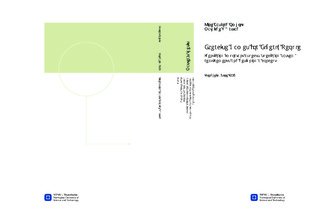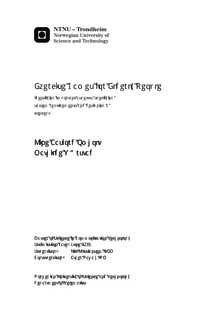| dc.description.abstract | The aim of this study is to identify important aspects of an exergame for elderly, and based on this, specify system requirements and develop a concept for an exergame. Due to "baby boomers" and the fact that people live longer, the share of older people in the world is growing. One common problem elderly people face is reduced balance function and physical strength, which increase the risk of falling. Engaging elderly in physical activity can help overcome this problem. However, this engagement can be challenging. Today, there is a great focus on the use of technology for health related purposes. This includes use of video games with motion sensor technology, like the Microsoft Kinect, to promote physical activity. These genre of games are called exercise games, or exergames, because they require the player to use body movements to play. Exergames have fun and entertaining features, which engage and motivates to gameplay and exercise. The Microsoft Kinect sensor has shown promise for use in clinical practice, and in a previous project we evaluated exergames to fit as a tool in physical therapy. Existing commercial games are made for a younger user group, and many games are therefore not suitable for the older generation. Evidently, there is a need to develop customised games for elderly, where their wants and needs are identified and considered. In this thesis we have developed a concept for an exergame for elderly people. Research on relevant topics has been conducted to identify important aspects of the game. We have looked into guidelines for how elderly should exercise, as well as general motivating factors for exercising. We have studied related research, identifying characteristics of elderly, as well as proposing guidelines on how to develop and design exergames for this group. In addition, official guidelines, proposed by three different organisations, on how to design user-friendly interfaces for elderly are provided. In the development of an exergame for elderly, usability and simplistic design become important. Meeting this, the relevant users have to be involved in the development process. Therefore, we have included a group of elderly in one iteration of the cycle of user-centered design. We conducted two workshops where this group participated. The first workshop included an experiment, where the elderly got to play three different commercial Xbox Kinect games. During the gaming session, we observed how they interacted with the games, what did and did not work, and how they seemed to like the games. A focus group interview was performed after the gaming session. We learned that the group liked playing the games, but that there were important aspects that could be improved, such as more instruction and feedback, easier menus, and more information about what was expected from them, which body parts that were exercised, and whether they did the exercises correctly or not. There was a wish for real-life activities, and appropriate music. Clear goals and the feeling of mastery were seen as important. Based on the findings from workshop 1 and the research on relevant topics, system requirements have been proposed and a design for an exergame concept has been developed. The exergame includes one compounded game, exercising the whole body, and four single games, exercising specific muscle groups. The games are made with relevant exercises in a familiar environment. Early stage prototypes were made to visually show scenarios from the games. In addition, a menu design was proposed. To include the users, and to get feedback on the concept, a second workshop was held. The exergame concept was presented by showing prototypes, simulating gameplay and explaining scenarios. Focus group discussions were held in order to get feedback on the exergame. The overall perception of the exergame was positive. However, some aspects of the games were unclear, and suggestions for improving the games were made. In this thesis we evaluate existing commercial Xbox Kinect games to not be suitable for the elderly users. This is because they contain elements that do not meet the needs and characteristics of elderly, and that they lack certain functionality. However, the games that contained real life activities were experienced as fun. The concept and design that we presented for the elderly were appreciated, and we conclude that this exergame, together with the proposed system requirements, are appropriate for this user group. However, some adjustments should be made in the future work on the exergame. We acknowledge that the group of users involved was physically and mentally fit, and that their opinions and experiences may differ from another group with other characteristics. | nb_NO |

